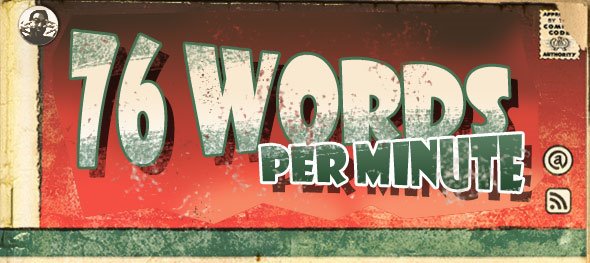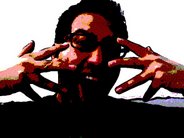Thursday, September 08, 2005
Mainstream "Graphic Novels"
Please bear with the extra large paragraph breaks these days, the format by which I'm posting isn't conducive to aesthetic page design...
What I really want to say is that the New York Times is finally making the full-fledged leap into comic-land with a new push for humor in it's published edition. I find it most interesting because the Times notoriously has kept out of funnybook-land for decades. Does this mean graphic novels and the like are more mainstream than ever? Well, let's ponder that question for a bit.
I argue that there are comics that are mainstream and obviously a lot more that are not. There's nary a person who doesn't know who Superman is, that his alter-ego is Clark Kent, or that the love of his life is Lois Lane. For every person who knows these facts, there are many, many more who are clueless to the fact that Superman is indeed powered by the Earth's yellow sun, that Lex Luthor used to have shocking red hair, and what the actual properties of gold kryptonite are (anyone who can answer this question immediately earns honor points in my book). The distinction must be made though that although knowing what Superman is all about is decidedly mainstream, the reading of the comic itself is not. Who would be caught dead reading a current issue riding the subway nowadays, who around here openly carries them to work and reads them during break at the cafeteria?
Yea, no one that I know at least...
This is where the Times draws the line, there won't be any classical format comic strips or men-in-tights charades published in four colors every Sunday. Instead, the golden boy of the intellectual graphic novel era, Chris Ware, will contribute a weekly serial for six months. Seeing that Mr. Ware is a favorite of mine, I see no problem with this at all. The term "graphic novel" itself is something of a euphemism these days and no doubt this is why it's used so liberally in the mainstream media. The term itself has even been thrown around madly on The OC with such vigor that even the suburbanites in letterman jackets and mini skirts know the term. It's what separates the geek nerds from the reputable nerds, the dumbed-down explosive action of the average superhero comic from the self-loathing miasma of a panel auteur, and the Times itself from the USA Today.
Should the average reader of Superman be offended then that he is likened to a child reading Dennis the Menace on a Sunday morning? Personally, I'm not. Even though I don't religiously read Superman at all, the foray into this realm for the NYT is good for the art form, which I really respect. It's inspiring to see them take this step, and also to see many other publishers taking the precipitous plunge into new territory. It gives me hope for achieving something new and maybe will supply more motivation for others as well.
Here's the entirety of the press release, check it out:
THE NEW YORK TIMES MAGAZINE ANNOUNCES “THE FUNNY PAGES” AND MAKES FIRST FORAY INTO FICTION
A comic strip, a humor column and a Sunday serial of fiction will appear each week in “The Funny Pages,” a new 10-page section making its debut September 18 in The New York Times Magazine. The section will offer The Magazine's audience a new reading experience that complements “The Way We Live Now,” the style section and the signature reportage for which The Magazine is known.
“The Funny Pages is our own take on the traditional Sunday paper funny pages,” says Gerald Marzorati, editor, The New York Times Magazine. “We wanted a place in our pages for genre fiction - mysteries, detective stories, and the like - which is having a particularly vibrant moment in popular culture just now. And we wanted to make a place for the work of those creating narrative comics and graphic novels, a great new art form. We wanted to publish humor - narrative, memoirish humor. And most of all we wanted to give our readers some new things that would bring a smile to their faces each Sunday morning, and our youngest readers a go-to destination when the paper arrives.”
“The Funny Pages” include:
-- “The Sunday Serial” - In the most ambitious feature of the new section, “The Sunday Serial” marks the first foray by The Times Magazine into fiction with approximately 14 weekly installments of an original, commissioned work. Best-selling author Elmore Leonard, whose highly acclaimed novels include “Get Shorty,” “Freaky Deaky” and “Tishomingo Blues,” launches the first serial.
-- “The Strip” - Stars of the graphic novel create serialized comic strips exclusively for Times Magazine readers. Each week's full-page color-strip features one self-contained story, and each strip will run for approximately six months. Chris Ware, whose best-selling graphic novel, “Jimmy Corrigan: The Smartest Kid on Earth,” has won numerous literary prizes, will create the first strip. It tells the story of a young girl and her adventures in her apartment house.
-- “True-Life Tales” - A new column showcasing the best young humor writers who tell hilariously true stories about everyday family life and societal trends. The Magazine will draw on top writers from the world of late-night television, public radio's “This American Life” and elsewhere.
If readers miss an installment of “The Sunday Serial” or want to catch up on “The Strip,” or the humor column, “The Funny Pages” will be available on NYTimes.com.
The New York Times Magazine ranked second in 2004 among all PIB (Publishers Information Bureau) measured magazines for total ad pages. Its regular contributors include Lynn Hirschberg, Michael Lewis, Jeffrey Rosen, Matt Bai, James Traub, Michael Ignatieff, James Bennet, Lisa Belkin, Peter Maass and Susan Dominus.
Subscribe to:
Post Comments (Atom)


3 comments:
Sooo..... What ARE the properties of Gold Kryptonite?
Gold kryptonite rids Superman of all his powers and renders him mortal.
In other news, I'm a horrible nerd.
Post a Comment